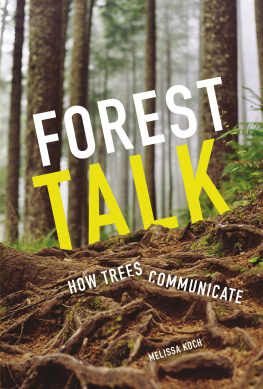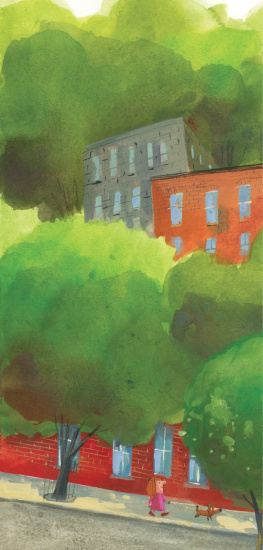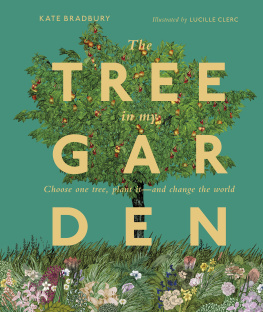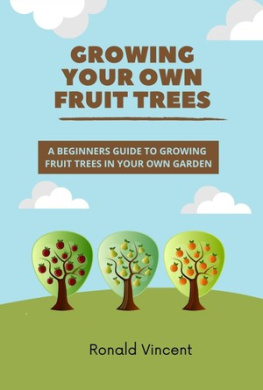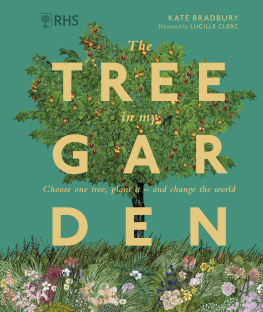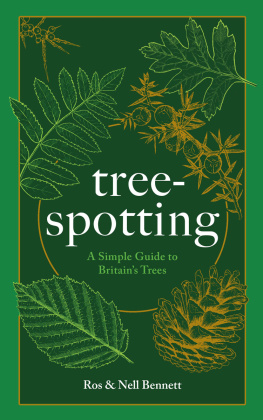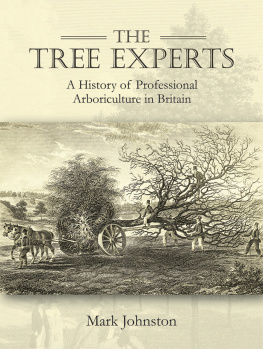Contents
Page List
Guide
Cover
CONTENTS
INTRODUCTION
Trees evoke strong personal emotions in me, but when I look up beyond the canopy of branches, or down below the carpet of fallen leaves, I see that trees have a profound impact on our landscape, soils, wildlife and even climate. Sometimes described as the lungs of the planet, trees are crucial to the survival of our ecosystem and of us as species. Though they are technically oxygen-neutral over their lifetime (if you take into account what is released when they die and decompose), as they grow trees sequester carbon and are net oxygen producers. In recent decades we have removed huge areas of forest, and the world has suffered.
As a young boy, I made dens in the dense yew hedge in our garden, and climbed through the branches in the local park. In my professional career in horticulture, I have been lucky enough to plant and tend thousands of trees, and I am convinced they are the quickest and simplest method there is to mitigate against and adapt to climate change. They are, of course, neither a silver bullet nor the only answer but, along with reducing our consumption, planting trees is something we can all do as individuals to combat our climate crisis.
I live in a modest terraced cottage, with a relatively small garden. When we moved in, it had a couple of shrubs in one corner. It now has three apple trees and a fig tree trained against the fences, while dotted around the rest of the garden are a twisted hazel, a Cornus kousa, a black elder and a showy hibiscus. These are not big trees but they are all contributing to the health of my garden and planet, as well as bringing me joy and some lovely fruit.
Most people seem to love trees. They bring physical benefits such as shade, shelter and food, and also improve our happiness, boost our mental health and even reduce crime. Interacting with trees and particularly climbing up them has been shown to build confidence and resilience in children.
Our increasingly urban population has lost touch with trees. Despite loving nature and growing up right on the edge of a relatively small city with ready access to trees, I remained woefully ignorant about them until relatively recently. Apart from a few very common species, I couldnt identify many types of tree, and had no idea about how to harvest or use them. Once-commonplace skills, such as hedgelaying, coppicing and hurdle making, are now almost unknown, as we have rushed to replace almost everything we use with a cheap plastic version.
Farmers would once have valued the trees on their farms, using the wood for fuel, with the fruit and berries supplementing their cultivated crops. Before the advent of barbed wire and electric fencing, trees were a crucial way of making sure animals stayed where you wanted them. The global food market and constant downwards pressure on commodity prices have forced many farmers to simplify their farming systems, building scale and efficiency. Trees have been pushed out and marginalized. Hedges have been ripped from the landscape to allow for bigger machinery. Trees became a problem rather than an asset.
At the same time, forestry became more industrialized. Larger equipment and huge markets for biomass fuel and wood pulp have driven unsustainable practices in many areas. There is also the tragedy of the destruction of large areas of virgin forest, encouraged further by land clearance for soya and palm oil production.
Despite all this doom and gloom, the times are changing. Many countries are planting trees and incentivising more sustainable farming and forestry. Pioneering farmers and foresters are challenging the status quo and experimenting with regenerative food and timber systems. The role that trees could play to help climate change is also now well recognized, helping money to flow into replanting, both from governments and private companies. The integration of farming and trees (also called agroforestry), which is where I now spend most of my professional effort, is finally getting the recognition that it deserves as perhaps the most planet-friendly way of producing food.
This book aims to be both a celebration of trees and a call to action. Around fifteen years ago, I made a commitment to plant at least one tree every year for the rest of my life. I have so far done that, and more, almost all of it on other peoples land. I dont own a farm, but I have not let this hold me back in my mission to bring more trees to the world. During my thirty years of work practising and advocating for organic and other earth-friendly production methods, I have never been more positive about the passion of people to save our planet, despite or perhaps because of the perilous conditions we have created.
If you already love trees, I urge you to protect them and increase their numbers. Become galvanized by groups such as the people of Sheffield, England, whose mass protest stopped a programme of urban tree removal. Or perhaps take as your inspiration, as I have, Jean Gionos wonderful story The Man Who Planted Trees. Published in 1953, this fictional tale was way ahead of its time in showing the power that one man can have on the natural world. You could also look to the real-life Jadav Payeng, who has been leading a one-man forestry-planting crusade in India for more than forty years. Even if you have no space to plant trees where you live, you may still be able to get involved in community gardens and orchards, or even team up with local farmers to establish some tree planting on their land.
Planting trees is not the only way to play a crucial role, however. Many new forest and urban trees die from lack of care. Remove a tree tie as a young tree grows to prevent it from being strangled. Volunteer at a local park or woodland. Perhaps just try to buy your food from a farm that is planting trees. How we spend our time and money remains one of the most powerful tools we have for change
Just as we have, as a species, created the problems we are facing today, so humans can be part of the solution. One tree at a time.
TREES AND THE WORLD
TREES AND THE CLIMATE
Trees are widely recognized as one of the most important solutions to our climate crisis. They play a role both in mitigation and adaptation. There are, quite rightly, urgent campaigns and ambitious targets around the world to plant more trees. However, there is also the risk that in our rush to retree the world we will do the wrong thing. Ill take a look here at how trees help our climate, and what we might need to be wary of.
Carbon sequestration
This is the big one. Trees (like all photosynthesising plants) take carbon dioxide from the air and use it to produce carbohydrates. What happens to this sequestered carbon, though? Some of it goes into the wood of the tree. This carbon is fixed in the timber until such time as the wood rots or is burnt. At this point it is released back into the air. Much of the carbohydrate produced by plants, however, is exuded through their roots to feed soil organisms. This is part of a complicated symbiotic relationship between tree roots and the soil ecosystem. Sugars, which non-photosynthesising animals cant produce, are traded for other nutrients that a plant needs to access in a soluble form from the soil. Much of this soil carbon is in constant flux, as animals eat each other and excrete, absorbing and releasing carbon. An increase in soil life (and particularly in fungi, as we shall see on ) will result in a reduction in carbon dioxide in the air, but it is less stable than that held in a tree, and can be released by soil disturbance or application of some agrochemicals, and especially fungicides.


